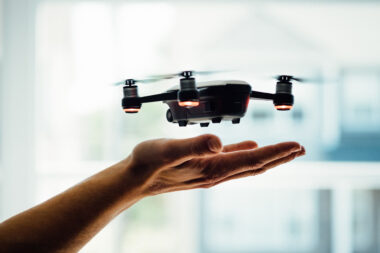In the ongoing battle to protect endangered species, technology is emerging as a powerful ally. Among the innovative tools in the conservationist’s arsenal, geofencing systems stand out as a robust defense against the persistent threat of poaching. This article explores how geofencing is reshaping wildlife conservation efforts, creating virtual boundaries that act as a formidable deterrent to illegal activities.
1. Understanding Geofencing in Conservation:
Geofencing involves the use of GPS or RFID technology to define geographical boundaries. In the context of wildlife conservation, these virtual boundaries are strategically established around protected areas, creating an invisible yet highly effective barrier against poachers.
2. How Geofencing Works:
Geofencing systems leverage GPS coordinates to establish predefined zones. When an unauthorized entry occurs within these zones, the system triggers alerts, notifying conservation authorities in real-time. This swift detection allows for a rapid and coordinated response to potential threats.
3. Real-Time Monitoring and Alerts:
One of the key strengths of geofencing is its ability to provide continuous real-time monitoring. As soon as a poacher or an unauthorized individual enters a protected area, alerts are sent to law enforcement, wildlife rangers, or conservation organizations, enabling them to take immediate action.
4. Enhancing Ranger Efficiency:
Geofencing technology reduces the burden on human resources by automating surveillance. Wildlife rangers can focus on strategic interventions and response efforts rather than constant patrolling, making conservation efforts more efficient and targeted.
5. Smart Wildlife Corridors:
Geofencing is employed to create smart wildlife corridors, enabling the safe movement of animals between fragmented habitats. By monitoring and controlling human activities within these corridors, conservationists ensure the safety and preservation of migratory routes.
6. Customization for Specific Threats:
Geofencing systems are adaptable to various landscapes and can be customized to address specific threats. Whether protecting rhino sanctuaries, elephant habitats, or nesting sites of endangered birds, geofencing offers a flexible solution to safeguard diverse ecosystems.
7. Integration with Other Technologies:
Geofencing doesn’t operate in isolation. It integrates seamlessly with other technologies such as camera traps, drones, and satellite surveillance, creating a comprehensive conservation network. This synergy enhances the ability to detect and deter poaching activities effectively.
8. Overcoming Geographical Challenges:
In remote or expansive conservation areas where traditional patrolling may be challenging, geofencing provides a continuous and unobtrusive layer of protection. This is particularly crucial for safeguarding wildlife in regions with limited resources.
9. Data-Driven Decision-Making:
Geofencing systems generate valuable data on intrusion patterns and potential hotspots. Analyzing this data enables conservationists to make informed decisions, deploy resources strategically, and implement targeted interventions to address emerging threats.
10. Future Prospects and Challenges:
While geofencing has proven effective, ongoing research and development aim to overcome challenges such as false alarms and adapting the technology to different ecosystems. As technology evolves, geofencing is poised to play an increasingly vital role in the conservation toolkit.
Hardware Components for Geofencing Systems:
1. GPS Receivers:
Essential hardware that receives signals from satellites to determine the precise location of devices within the geofenced area.
2. RFID Tags or NFC Chips:
In scenarios where GPS alone may not be sufficient, Radio-Frequency Identification (RFID) tags or Near Field Communication (NFC) chips are used for proximity-based geofencing.
3. Communication Modules:
Hardware components, such as cellular or satellite communication modules, facilitate the transmission of geolocation data to a central server or monitoring system.
4. Sensors:
Various sensors, including motion sensors, accelerometers, and environmental sensors, can enhance the functionality of geofencing systems by detecting movement or specific environmental conditions.
5. Cameras and Imaging Devices:
For additional security and monitoring, cameras and imaging devices may be integrated into the hardware setup, capturing visuals of the geofenced area and potential intruders.
6. Gateways:
Devices that act as communication hubs between sensors, GPS receivers, and the central server. Gateways manage data transmission and reception within the geofencing network.
7. Power Sources:
Depending on the deployment location, geofencing systems may require various power sources, including batteries, solar panels, or connections to existing power infrastructure.
Software Components for Geofencing Systems:
1. Geofencing Algorithms:
Core software components that define and manage the virtual boundaries of geofenced areas. These algorithms use GPS or RFID data to trigger events when devices enter or exit predefined zones.
2. Geolocation Services:
Software services that provide accurate location data through GPS or other positioning technologies. These services are crucial for real-time tracking and monitoring within the geofenced areas.
3. Data Processing and Analytics:
Software responsible for processing the incoming data from sensors, GPS receivers, and other hardware components. Analytics tools help in interpreting the data, identifying patterns, and generating insights.
4. Alert and Notification Systems:
Software modules that generate alerts and notifications when an unauthorized entry or exit is detected within the geofenced area. These alerts are often sent to designated personnel or systems for immediate action.
5. Integration with Surveillance Systems:
Software interfaces that enable seamless integration with surveillance cameras, drones, or other imaging devices. This integration enhances the overall monitoring capabilities of the geofencing system.
6. User Interface (UI) and Control Panel:
Software interfaces that allow administrators to configure, monitor, and manage the geofencing system. The control panel provides a user-friendly dashboard for overseeing the status of geofenced areas.
7. Database Management:
Software responsible for storing and managing geolocation data, historical intrusion records, and other relevant information. This data is valuable for analysis and reporting.
8. Security Features:
Software components that implement encryption, authentication, and authorization protocols to secure communication and prevent unauthorized access to the geofencing system.
Latest Manufacturing Techniques
1. Miniaturized Hardware Components:
Utilizing advanced microfabrication techniques to produce smaller and more energy-efficient GPS receivers, RFID tags, and communication modules. Miniaturization enhances the portability and efficiency of geofencing hardware.
2. Integration of MEMS Technology:
Incorporating Micro-Electro-Mechanical Systems (MEMS) technology into sensors and accelerometers. MEMS technology allows for the production of highly sensitive and compact sensors, improving the precision of geofencing systems.
3. Flexible and Wearable Geofencing Devices:
Exploring flexible electronics and wearable form factors for geofencing hardware, allowing for easier integration into diverse environments. This flexibility supports applications in wildlife tracking and monitoring.
4. Edge Computing for Gateways:
Implementing edge computing capabilities in gateways to process data locally before transmitting it to the central server. This reduces latency and enhances the real-time responsiveness of geofencing systems.
5. Sustainable Power Solutions:
Investigating sustainable power sources, such as advanced battery technologies, energy harvesting, and solar panels. Sustainable power solutions reduce the environmental impact of geofencing systems, especially in remote or off-grid locations.
6. Enhanced Communication Protocols:
Utilizing the latest communication protocols, such as Low-Power Wide-Area Network (LPWAN) technologies, for efficient and long-range communication between geofencing devices and central servers.
7. AI-Driven Geofencing Algorithms:
Integrating artificial intelligence (AI) and machine learning algorithms into geofencing software to enhance the accuracy of virtual boundaries. AI-driven algorithms can adapt to changing environmental conditions and improve intrusion detection capabilities.
8. Blockchain for Data Security:
Exploring the integration of blockchain technology to enhance the security of geofencing data. Blockchain ensures data integrity, traceability, and secure communication, reducing the risk of tampering or unauthorized access.
9. Cloud-Based Configuration and Updates:
Implementing cloud-based solutions for configuring and updating geofencing devices remotely. Cloud services enable seamless software updates, configuration changes, and data management without physical intervention.
10. Real-Time Edge Analytics:
Incorporating edge analytics capabilities in geofencing devices to process and analyze data locally. Real-time edge analytics reduce the need for constant data transmission, conserving bandwidth and improving system responsiveness.
11. Advanced Materials for Durability:
Researching and implementing advanced materials, such as rugged polymers and corrosion-resistant alloys, to enhance the durability of geofencing hardware. This is particularly important for devices deployed in challenging environmental conditions.
12. 5G Connectivity for High-Speed Data Transmission:
Leveraging 5G connectivity to enable high-speed data transmission between geofencing devices and central servers. This ensures quick response times and facilitates the handling of large datasets generated by the system.
These manufacturing techniques collectively contribute to the evolution of geofencing systems, making them more efficient, sustainable, and adaptable to a wide range of applications, from wildlife conservation to industrial security.
In conclusion, geofencing stands as a beacon of hope in the fight against poaching, offering a proactive and technologically advanced approach to wildlife conservation. As we continue to explore innovative solutions, geofencing exemplifies how the marriage of conservation and technology can create a safer haven for Earth’s most vulnerable species.



